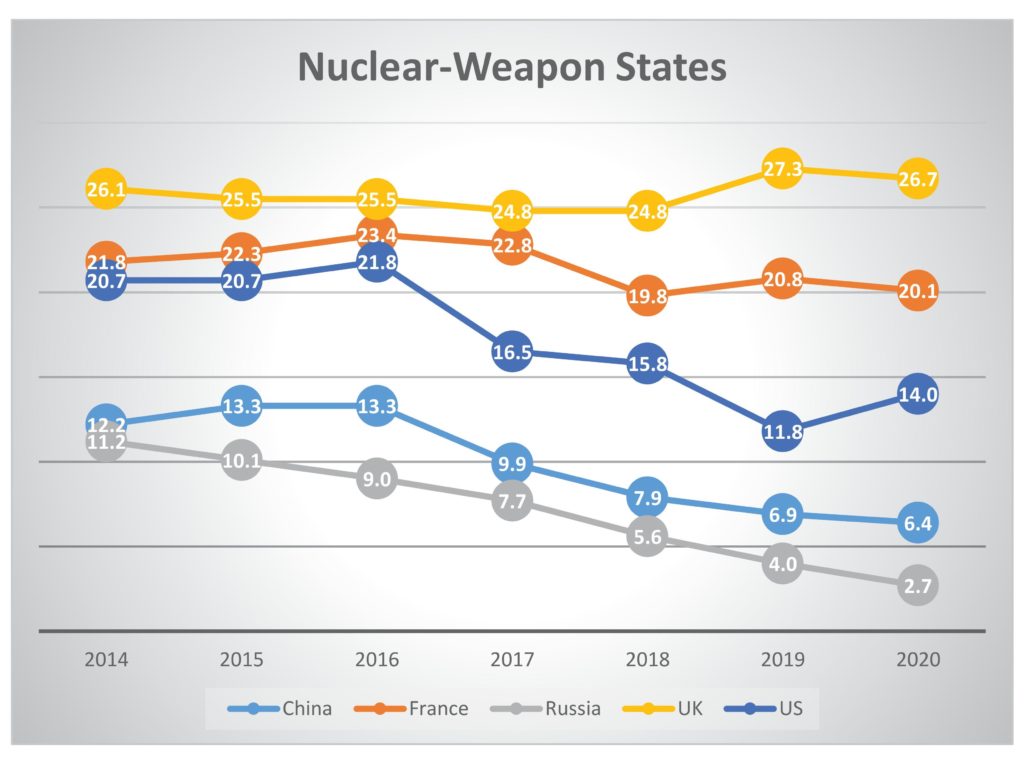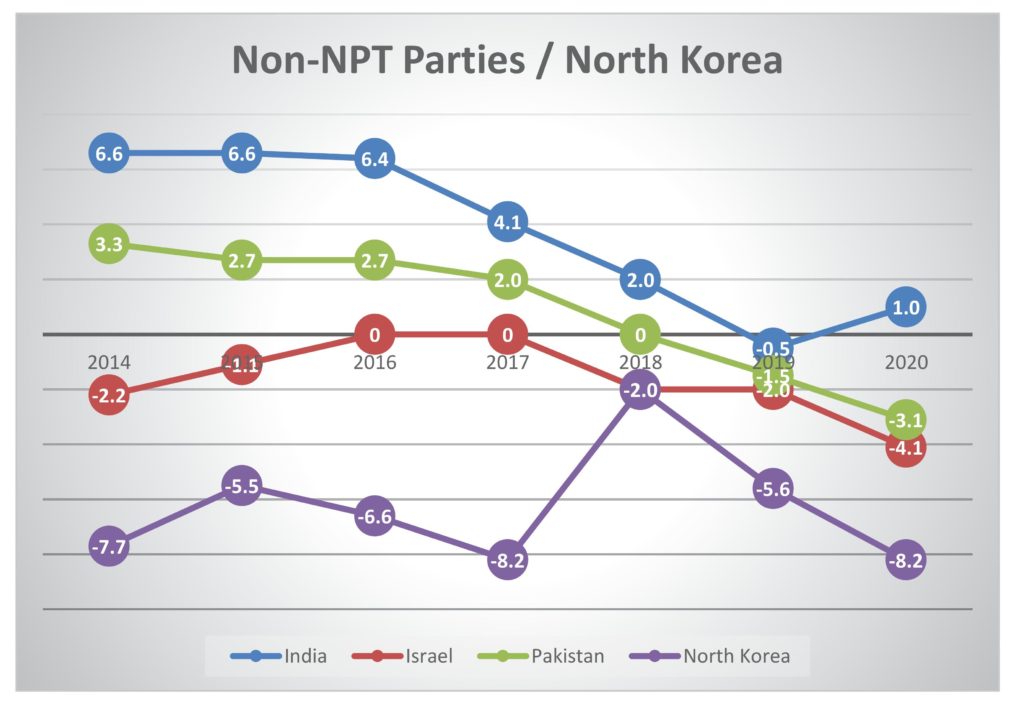Area Summary
(1) Nuclear Disarmament
6-point Nuclear Disarmament Radar Charts
According to the following radar charts illustrating where each nuclear-weapon state stands with respect to different aspects of nuclear disarmament, China is required to improve its efforts for nuclear weapons reduction and transparency. Russia and the United States are urged to undertake further reductions of their nuclear arsenals. The performances of France the United Kingdom are relatively well-balanced, compared to the other NWS. Still, those two countries need to improve their efforts regarding reductions, commitments and operational policies.
| Aspects | Issues |
| Number | ⚫ Number of nuclear weapons |
| Reduction | ⚫ Reduction of nuclear weapons |
| Commitments | ⚫ Treaty on the Prohibition of Nuclear Weapons (TPNW) ⚫ Commitments to achieving a world without nuclear weapons ⚫ Disarmament and non-proliferation education and cooperation with the civil society ⚫ Hiroshima and Nagasaki Peace Memorial Ceremonies |
| Operational policy | ⚫ Diminishing roles and significance of nuclear weapons in the national security strategies and policies ⚫ De-alerting, or measures for maximizing decision time to authorize the use of nuclear weapons |
| Multilateral treaties | ⚫ Comprehensive Nuclear-Test-Ban Treaty (CTBT) ⚫ Fissile Material Cut-off Treaty (FMCT) |
| Transparency | ⚫ Transparency regarding nuclear forces, fissile material for nuclear weapons, and nuclear strategy/doctrine ⚫ Verification of nuclear weapons reductions ⚫ Irreversibility |

Fluctuations of Evaluation Rates
The following graph shows the fluctuations of the evaluation rates regarding nuclear disarmament for NWS, other nuclear-armed states and North Korea, and some of NNWS for the period 2014-2020. Within this period, certain revisions have been made to the evaluation criteria and scale of measurements, taking into account the changes in the trends surrounding nuclear disarmament. Needless to say, it is not an appropriate method to analyze and discuss the grades and evaluation rates based on different criteria and scale of measurements. For instance, when the Treaty on the Prohibition of Nuclear Weapons (TPNW) was adopted in 2017, the Hiroshima Report set new evaluation criteria and scale of measurements related to it. The fact that each country’s evaluation rate regarding nuclear disarmament fluctuated before and after the adoption of the TPNW is mainly because of such a revision, especially with regard to whether signing and/or ratifying the TPNW or not.
While there are methodological problems in such a way, some of the trends in their respective efforts toward nuclear disarmament can be still observable, apart from the impact of the adoption of the TPNW. For example, among the NWS, China, Russia and the United States—which have been engaged in great power competition—are declining in their efforts toward nuclear disarmament. Non-NPT countries and North Korea are much less positive to work toward nuclear disarmament, and their reluctance has been further worsening. On the other hand, France and the United Kingdom, as well as some of NNWS, have generally continued to make consistent efforts toward nuclear disarmament, with the exception of their response to TPNW. However, this also indicates that the efforts of these countries have reached a plateau.



(2) Nuclear Non-Proliferation
(3) Nuclear Security









